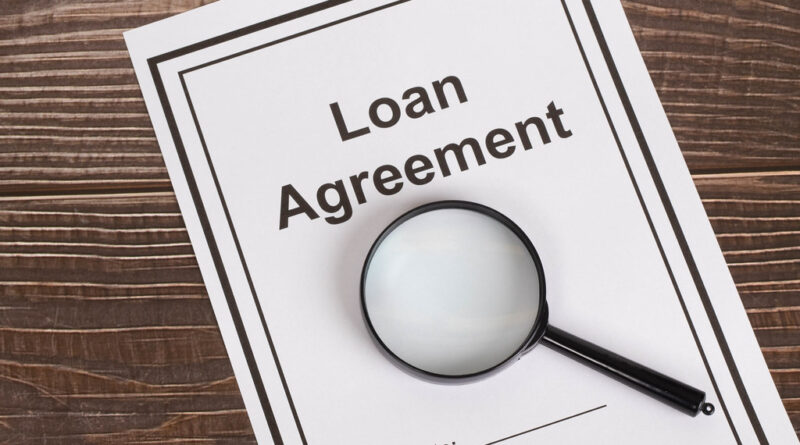Mastering Construction Loan Documentation: Best Practices
If you’re a private lender, real estate investor, or buyer, this article is tailor-made for you. In the world of construction loans, proper documentation is the key to success. By following the best practices outlined here, you’ll gain the expertise and confidence to navigate the complexities of construction loan documentation effortlessly.
Understanding the significance of adhering to best practices is crucial. Not only do these practices ensure legal compliance, but they also safeguard your investments and establish a foundation of trust with borrowers and contractors.
Throughout this article, we will explore step-by-step procedures, real-world examples, and the benefits of adopting these practices. Are you ready to take your construction loan ventures to new heights? Let’s dive in!
The Importance of Following Best Practices
Construction loan documentation plays a pivotal role in any construction project. It serves as the foundation of your business transactions, ensuring clarity, legal compliance, and risk management.
By adhering to best practices, you can safeguard your investments, foster trust with borrowers and contractors, and streamline the loan process from start to finish.
1. Thorough Initial Evaluation
The first step in mastering construction loan documentation is conducting a comprehensive initial evaluation of the project and the borrower’s qualifications. This evaluation helps you determine the project’s feasibility, budget, timeline, and potential risks.
By carefully assessing these factors, you can accurately determine the appropriate loan amount and set the stage for a successful loan process.
2. Clear and Detailed Loan Terms
Document the loan terms clearly and concisely. Include essential details such as the loan amount, interest rate, repayment schedule, and any contingencies.
Clearly define the roles and responsibilities of all parties involved, including the borrower, contractors, and your own obligations as a lender or investor. This step prevents misunderstandings and ensures that everyone is on the same page.
3. Comprehensive Draw Process
Establishing a well-defined draw process is vital for disbursing funds during different construction phases. Require detailed documentation, such as invoices, receipts, and progress reports, to validate the need for the funds requested by the borrower or contractor.
Regular site inspections and progress checks should be documented to keep track of the project’s status and adherence to the loan terms.
4. Thorough Borrower Documentation
Gather all necessary documentation from the borrower, including financial statements, credit history, project experience, and references.
Verify the accuracy of the provided information to assess the borrower’s ability to handle the project successfully. This step helps you understand the borrower’s financial capacity and credibility, reducing the risk of defaults.
5. Proper Insurance Coverage
Ensure that the borrower, contractors, and the property have adequate insurance coverage. This includes builder’s risk insurance, general liability insurance, and any other coverage relevant to the project. Proper insurance coverage protects all parties involved in case of accidents or unexpected events during the construction process.

Real-World Examples of Effective Documentation
Let’s explore some real-world examples to understand how effective construction loan documentation can make a difference:
- Example 1: Avoiding Cost Overruns
- A lender implemented a comprehensive draw process, requiring detailed invoices and receipts. This diligence allowed them to identify potential cost overruns early in the construction process. By addressing the issue promptly, they managed to maintain the project’s budget and protect their investment.
- Example 2: Mitigating Project Delays
- Another lender’s thorough initial evaluation revealed potential delays due to permit issues. By addressing the problem before funding the loan, they prevented costly delays and minimized risks for all parties involved, fostering smoother project execution.
- Example 3: Ensuring Borrower Qualification
- A lender meticulously verified a borrower’s financial capacity and project experience. This step helped them avoid funding a project with inadequate resources, protecting their investment and ensuring the borrower’s capability to handle the project successfully.
Benefits of Adopting Best Practices
Embracing best practices for construction loan documentation offers numerous advantages:
- Reduced Risk: By conducting thorough evaluations and implementing stringent documentation processes, you can minimize the likelihood of defaults and financial losses.
- Enhanced Efficiency: Streamlining loan processing and disbursement through clear documentation procedures saves time and resources for all parties involved.
- Stronger Relationships: Transparent and consistent practices build trust and credibility with borrowers, contractors, and other stakeholders, fostering long-term relationships.
- Legal Compliance: Ensuring compliance with regulatory requirements and comprehensive documentation helps avoid legal complications that may arise from incomplete or inaccurate records.
Challenges in Construction Loan Documentation
While best practices can significantly improve your construction loan processes, challenges may still arise. Here are some common obstacles and tips for addressing them:
- Changing Project Scope: Address scope changes promptly and document any modifications to avoid discrepancies between the original loan terms and the project’s actual requirements.
- Insufficient Documentation: Encourage borrowers and contractors to provide comprehensive documentation to support their funding requests adequately. Make it clear that detailed records are essential for smooth loan processing.
- Market Fluctuations: Stay vigilant about economic and market fluctuations that may impact the project’s timeline and budget. Be prepared to adjust your approach as needed to adapt to changing conditions.
Final Words
Congratulations! You have now gained a thorough understanding of the best practices for mastering construction loan documentation. By following these practices, you can streamline your loan processes, minimize risks, and build successful partnerships with borrowers and contractors.
Are you ready to take your construction loan ventures to new heights? Start by implementing these best practices and witness the transformative impact they can have on your business.
Whether you are a seasoned lender or a budding investor, mastering construction loan documentation is the gateway to unparalleled success in this dynamic industry.
Take Action Now!
Don’t wait any longer. Review your current documentation processes and identify areas for improvement. Start integrating these best practices into your loan procedures immediately.
Remember, investing time and effort into mastering construction loan documentation will pay off in the form of smoother transactions, reduced risks, and thriving business relationships. Go forth with confidence and conquer the world of construction loan documentation!
